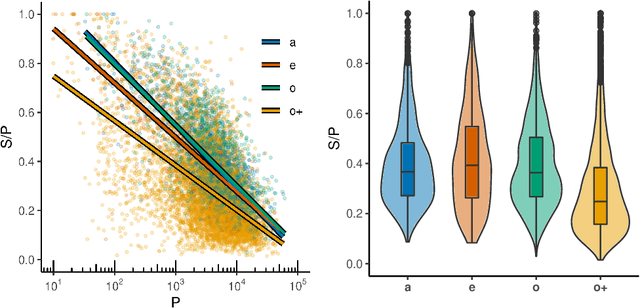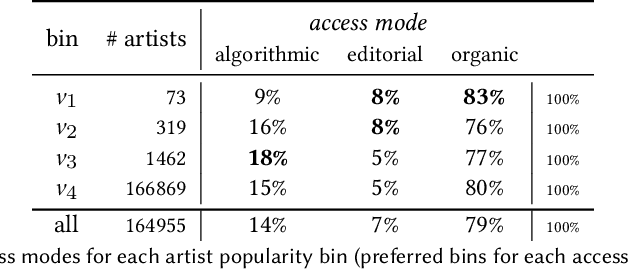Thomas Louail
Do Recommender Systems Promote Local Music? A Reproducibility Study Using Music Streaming Data
Aug 29, 2024Abstract:This paper examines the influence of recommender systems on local music representation, discussing prior findings from an empirical study on the LFM-2b public dataset. This prior study argued that different recommender systems exhibit algorithmic biases shifting music consumption either towards or against local content. However, LFM-2b users do not reflect the diverse audience of music streaming services. To assess the robustness of this study's conclusions, we conduct a comparative analysis using proprietary listening data from a global music streaming service, which we publicly release alongside this paper. We observe significant differences in local music consumption patterns between our dataset and LFM-2b, suggesting that caution should be exercised when drawing conclusions on local music based solely on LFM-2b. Moreover, we show that the algorithmic biases exhibited in the original work vary in our dataset, and that several unexplored model parameters can significantly influence these biases and affect the study's conclusion on both datasets. Finally, we discuss the complexity of accurately labeling local music, emphasizing the risk of misleading conclusions due to unreliable, biased, or incomplete labels. To encourage further research and ensure reproducibility, we have publicly shared our dataset and code.
Follow the guides: disentangling human and algorithmic curation in online music consumption
Sep 08, 2021



Abstract:The role of recommendation systems in the diversity of content consumption on platforms is a much-debated issue. The quantitative state of the art often overlooks the existence of individual attitudes toward guidance, and eventually of different categories of users in this regard. Focusing on the case of music streaming, we analyze the complete listening history of about 9k users over one year and demonstrate that there is no blanket answer to the intertwinement of recommendation use and consumption diversity: it depends on users. First we compute for each user the relative importance of different access modes within their listening history, introducing a trichotomy distinguishing so-called `organic' use from algorithmic and editorial guidance. We thereby identify four categories of users. We then focus on two scales related to content diversity, both in terms of dispersion -- how much users consume the same content repeatedly -- and popularity -- how popular is the content they consume. We show that the two types of recommendation offered by music platforms -- algorithmic and editorial -- may drive the consumption of more or less diverse content in opposite directions, depending also strongly on the type of users. Finally, we compare users' streaming histories with the music programming of a selection of popular French radio stations during the same period. While radio programs are usually more tilted toward repetition than users' listening histories, they often program more songs from less popular artists. On the whole, our results highlight the nontrivial effects of platform-mediated recommendation on consumption, and lead us to speak of `filter niches' rather than `filter bubbles'. They hint at further ramifications for the study and design of recommendation systems.
 Add to Chrome
Add to Chrome Add to Firefox
Add to Firefox Add to Edge
Add to Edge